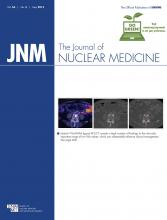Abstract
Primary hyperparathyroidism is a frequent and potentially debilitating endocrine disorder for which surgery is the only curative treatment. The modalities of parathyroid surgery have changed over the last 2 decades, as conventional bilateral neck exploration is no longer the only surgical approach. Parathyroid scintigraphy plays a major role in defining the surgical strategy, given its ability to orient a targeted (focused) parathyroidectomy and to recognize ectopic locations or multiglandular disease. This review, which represents a collaborative effort between nuclear physicians, endocrinologists, and endocrine surgeons, emphasizes the importance of performing imaging before any surgery for primary hyperparathyroidism, even in the case of conventional bilateral neck exploration. We discuss the advantages and drawbacks of targeted parathyroidectomy and the performance of various scintigraphic protocols to guide limited surgery. We also discuss the optimal strategy to localize the offending gland before reoperation for persistent or recurrent hyperparathyroidism. Finally, we describe the potential applications of novel PET tracers, with special emphasis on 18F-fluorocholine.
- hyperparathyroidism
- MIBI
- dual-tracer
- parathyroid subtraction imaging
- SPECT/CT
- PET/CT
- 18F-fluorocholine
- 11C-methionine
Footnotes
Published online Apr. 9, 2015.
Learning Objectives: On successful completion of this activity, participants should be able should be able to describe (1) the role of parathyroid scintigraphy before bilateral cervicotomy or minimally invasive surgery for primary hyperparathyroidism; (2) the performance of different imaging protocols to detect multiglandular disease; (3) the appropriate imaging strategy before reoperation for persistent or recurrent hyperparathyroidism; and (4) the potential use of novel PET tracers.
Financial Disclosure: The authors of this article have indicated no relevant relationships that could be perceived as a real or apparent conflict of interest.
CME Credit: SNMMI is accredited by the Accreditation Council for Continuing Medical Education (ACCME) to sponsor continuing education for physicians. SNMMI designates each JNM continuing education article for a maximum of 2.0 AMA PRA Category 1 Credits. Physicians should claim only credit commensurate with the extent of their participation in the activity. For CE credit, SAM, and other credit types, participants can access this activity through the SNMMI website (http://www.snmmilearningcenter.org) through May 2018.
- © 2015 by the Society of Nuclear Medicine and Molecular Imaging, Inc.







